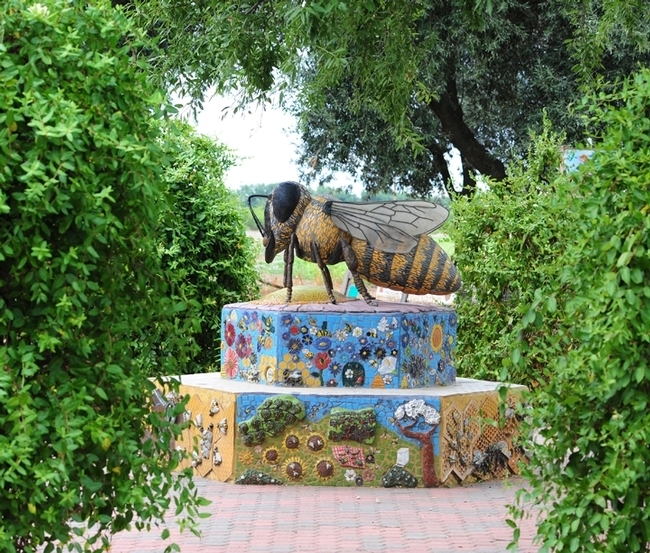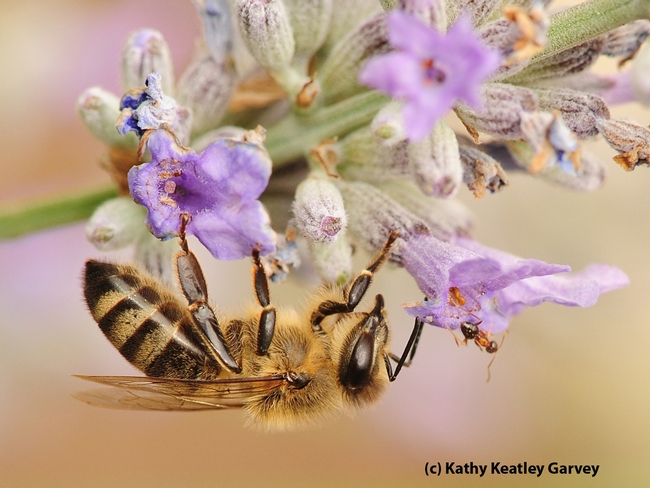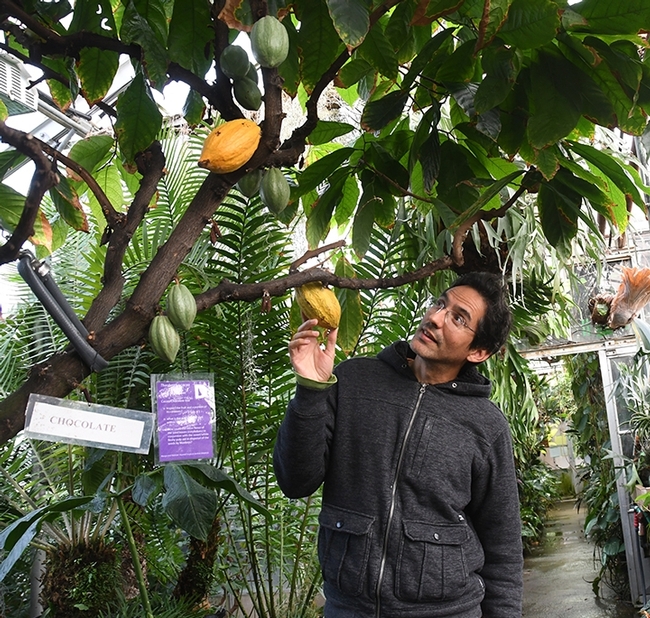Posts Tagged: raptors
UC Davis Biodiversity Museum Program: Learning About the Diversity of Life
It's science-based and it's family friendly. And it's where you can learn more about honey bees, orchid bees, Asian giant hornets, nematodes,...

This sculpture of a worker bee anchors the UC Davis Department of Entomology and Nematology's Häagen-Dazs Honey Bee Haven. Titled "Miss Bee Haven," it is by Donna Billick of Davis. (Photo by Kathy Keatley Garvey)

A honey bee and a velvet tree ant. (Photo by Kathy Keatley Garvey)

Ernesto Sandoval of the UC Davis Botanical Conservatory checks out a cacao tree, also called "a chocolate tree." (Photo by Kathy Keatley Garvey)
California's lead ammunition ban was product of years of research
California recently passed a law that will ban the use of lead ammunition when taking wildlife with a firearm. The intent is to protect scavenging birds and other wildlife from the threats of lead poisoning from spent lead ammunition.
While the new law, which was passed on Oct. 11, 2013, will be phased in over the next six years, the research that helped shape it has been going on for some time and much of it was done by researchers at the University of California, Davis.
UC Davis wildlife epidemiologist Terra Kelly (in photo at right) studied the effects of big game hunting on lead exposure in carrion-eating birds like eagles and turkey vultures and monitored the effect of a 2008 law that made it illegal to hunt with lead ammunition in eight counties within the California condor range. Kelly did her doctoral work with wildlife health expert Christine Johnson, associate professor of epidemiology at UC Davis School of Veterinary Medicine.
Scavenging birds and other animals are susceptible to lead poisoning when they inadvertently ingest spent pellets or bullet fragments in the tissues of animals killed by lead-based ammunition.
"Lead is a soft metal, so it fragments upon impact leaving hundreds of pieces around the wounded area of the animal," Kelly said. "Many scavengers forage in large groups, meaning a single carcass or gut-pile containing spent lead ammunition can expose many individuals."
Kelly and Johnson’s studies were funded by the California Department of Fish and Wildlife and published by the journal PLoS ONE in 2011.
While their research illuminates the threat posed by lead ammunition, Kelly and Johnson make clear that hunting itself is not the issue at hand.
"Hunting is an irreplaceable tool for wildlife management, especially now that we have fewer large predators but more invasive species like wild pigs," said Johnson in 2011, when the studies were published. "Yet we know that accidental consumption of lead can make animals and people sick."
"It just makes good sense to use non-lead ammunition, wherever it is available, to protect wildlife as well as eliminate any potential risk to hunters and their families," she added.
Lead poisoning has been an ongoing issue for birds at rehabilitation facilities, with Golden Eagles being hit especially hard.
"By the time they get to the center, we’re often unable to treat them because they’re so close to death," said Michelle Hawkins, director of the school's California Raptor Center. "We put in our best efforts, but very commonly it’s a losing battle. Prevention is definitely the way to keep these birds from having this problem."
National Geographic published a story about the lead ban on Oct. 11, quoting Johnson on the need for long-term monitoring of birds. She and Kelly say it should start right away so that wildlife can be tracked between now and 2019, when the law must be in full effect.


